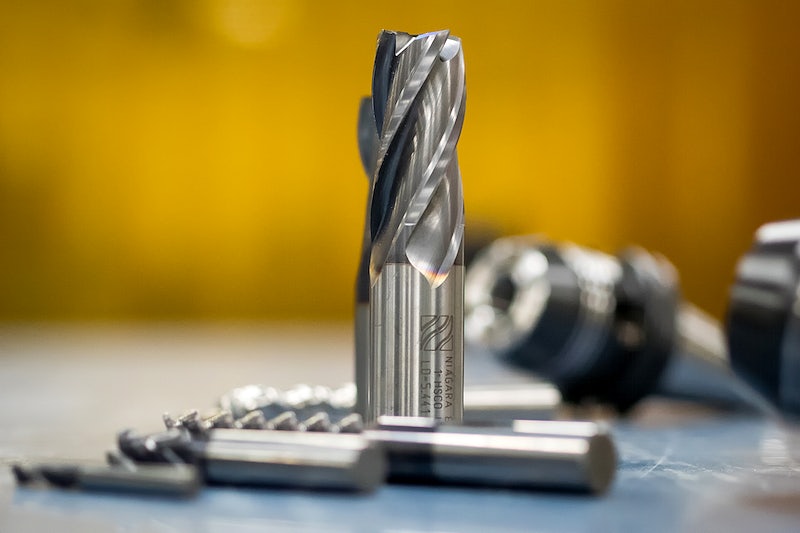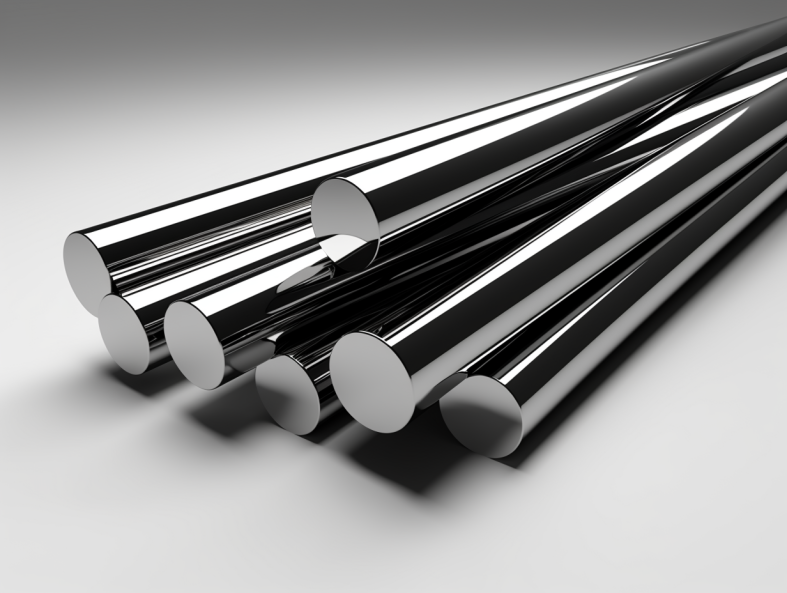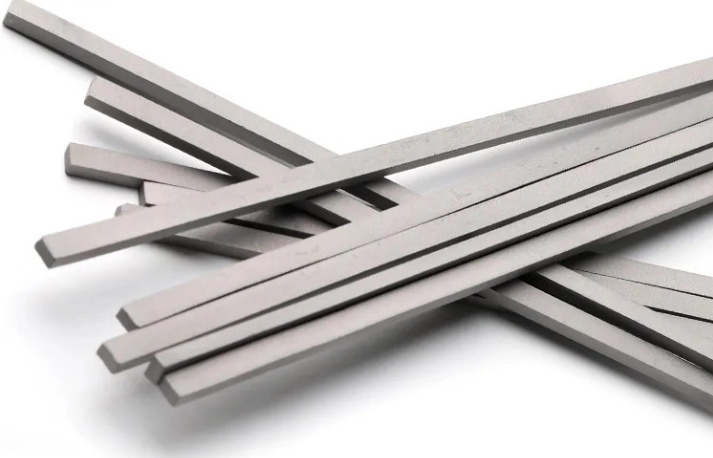Vue d'ensemble
Carbure endmills tailored for non-ferrous metals offer remarkable efficiency and precision. These advanced tools are designed to handle the unique properties of non-ferrous materials, such as aluminum, copper, brass, and titanium, providing high-quality finishes and extended tool life. This blog will explore the specifics of carbide endmills for non-ferrous metals, including their definition, working principles, usage, manufacturing processes, classifications, market trends, applications, and more. Additionally, we will use a table to compare various types and highlight the advantages and disadvantages of these tools.
Introduction détaillée
What Is a Carbide Endmill for Non-Ferrous Metals?
A carbide endmill for non-ferrous metals is a cutting tool made from tungsten carbide, specifically designed to machine non-ferrous materials. Non-ferrous metals, which do not contain iron, have unique properties that require specialized tools to cut efficiently and accurately. These endmills are engineered to provide exceptional performance, reducing tool wear and improving the quality of the finished product.

How Does a Carbide Endmill for Non-Ferrous Metals Work?
The operation of a carbide endmill for non-ferrous metals is based on its cutting edges and the properties of carbide material. Tungsten carbide is incredibly hard and wear-resistant, allowing the endmill to maintain sharp cutting edges even under high temperatures and during prolonged use. The design of the endmill, including the number of flutes and the helix angle, is optimized for efficient chip evacuation and minimal tool deflection, ensuring smooth and precise cuts.
How to Use a Carbide Endmill for Non-Ferrous Metals
Using a carbide endmill for non-ferrous metals involves the following steps:
- Machine Setup: Ensure the milling machine is properly calibrated and the workpiece is securely clamped.
- Sélection des outils: Choose the appropriate carbide endmill based on the specific non-ferrous material and desired finish.
- Vitesse de rotation et d'avance: Set the correct spindle speed and feed rates according to the material being machined.
- Coolant Use: Apply coolant to reduce heat buildup and prolong tool life.
- Monitoring: Continuously monitor the milling process to adjust parameters as needed and ensure optimal performance.
How Are Carbide Endmills for Non-Ferrous Metals Manufactured?
The manufacturing process of carbide endmills for non-ferrous metals involves several precise steps:
- Préparation de la poudre: Tungsten carbide powder is mixed with a binder, typically cobalt.
- Compactage: The powder mixture is compacted into the desired shape using a mold.
- Frittage: The compacted form is heated in a sintering furnace, bonding the particles together and forming a solid carbide endmill blank.
- Flute Grinding: The flutes are ground into the blank using specialized grinding wheels.
- Revêtement: The endmill may be coated with materials such as titanium nitride (TiN) or diamond-like carbon (DLC) to enhance performance.
- Contrôle de la qualité: Each endmill undergoes rigorous testing to ensure it meets the required specifications.
Classification of Carbide Endmills for Non-Ferrous Metals
Carbide endmills for non-ferrous metals can be classified based on various criteria:
- Number of Flutes: Typically ranging from 2 to 4, optimized for chip evacuation.
- Revêtement: Options include uncoated, TiN-coated, DLC-coated, etc.
- Géométrie de l'extrémité: Flat end, ball end, corner radius end, etc.
- Angle de l'hélice: The angle of the flute relative to the endmill’s axis, typically between 30° to 45°.
- Application: General-purpose, finishing, roughing, high-speed machining, etc.
Tendances du marché
The market for carbide endmills for non-ferrous metals is expanding, driven by advancements in manufacturing technologies and the growing demand for high-precision machining. Key trends include:
- Increased Use in Aerospace and Automotive Industries: Demand for high-performance materials requires advanced cutting tools.
- Technological Innovations: Development of new coatings and geometries to enhance performance.
- Sustainability Efforts: Focus on eco-friendly manufacturing processes and recycling of carbide materials.
Detailed Product Information
Below is a table highlighting the basic information of carbide endmills for non-ferrous metals, including their types, components, properties, features, specifications, sizes, grades, and standards.
| Type | Composant | Propriétés | Caractéristiques | Spécifications | Tailles | Notes | Normes |
|---|---|---|---|---|---|---|---|
| Standard Carbide | WC-Co | Dureté élevée, résistance à l'usure | Multiple flutes, smooth cuts | Divers | 1mm-20mm diameter | ISO K10-K30 | ISO, ANSI |
| TiN-Coated Carbide | WC-Co + TiN | Enhanced wear resistance, lower friction | TiN coating, high-speed machining | Personnalisable | Various lengths and diameters | ISO K15-K40 | ISO, ANSI |
| DLC-Coated Carbide | WC-Co + DLC | Superior heat resistance, durability | DLC coating, high-temperature applications | Personnalisable | Divers | ISO K20-K35 | ISO, ANSI |
| Ball End Carbide | WC-Co | High precision, smooth finishes | Ball end geometry, multiple flutes | Personnalisable | 1mm-20mm diameter | ISO K25-K40 | ISO, ANSI |
Applications of Carbide Endmills for Non-Ferrous Metals
Carbide endmills for non-ferrous metals are versatile tools used in a variety of industries and applications. Here are some key uses:
- Industrie aérospatiale: Precision milling of complex components, machining of aluminum alloys and titanium.
- Industrie automobile: Manufacturing of engine parts, transmission components, and lightweight chassis parts.
- Industrie médicale: Machining of surgical instruments, dental components, and implants made from non-ferrous metals.
- Fabrication d'outils et de matrices: Creation of molds, dies, and precision tools.
- Industrie électronique: Milling of circuit boards, aluminum and copper housings, and connectors.
- Fabrication générale: High-speed machining of various non-ferrous materials including aluminum, brass, and copper.
Advantages and Disadvantages of Carbide Endmills for Non-Ferrous Metals
Here is a table summarizing the pros and cons of carbide endmills for non-ferrous metals:
| Aspect | Avantages | Inconvénients |
|---|---|---|
| Durabilité | Grande résistance à l'usure, longue durée de vie | Higher initial cost compared to standard endmills |
| Performance | Superior cutting efficiency, precision | Requires skilled handling and precise setup |
| Personnalisation | Tailored to specific needs, various geometries available | Délais plus longs pour les commandes personnalisées |
| Propriétés des matériaux | Exceptional hardness, thermal stability | Flexibilité limitée dans certaines applications |
Sujets connexes
Innovations in Endmill Technology
Recent advancements in endmill technology include the development of hybrid endmills that combine the benefits of multiple materials and coatings. These innovations aim to further enhance cutting performance, tool life, and versatility in various machining applications.
Sustainability in Endmill Manufacturing
The endmill manufacturing industry is increasingly focusing on sustainability. Efforts include recycling carbide materials, reducing energy consumption, and developing eco-friendly coatings. These practices not only benefit the environment but also improve the overall efficiency of the manufacturing process.
Future Trends in Milling Tools
The future of milling tools, including carbide endmills for non-ferrous metals, looks promising with ongoing research into new materials and manufacturing techniques. Trends such as additive manufacturing, the integration of smart materials, and the use of artificial intelligence in tool design and optimization are expected to drive the industry forward.
FAQ
Q1: What factors should I consider when choosing a carbide endmill for non-ferrous metals?
A1 : When choosing a carbide endmill for non-ferrous metals, consider the specific material being machined, the desired surface finish, the number of flutes, the coating, and the end geometry. Additionally, ensure that the tool is compatible with your milling machine and the specific application requirements.
Q2: How does the number of flutes affect the performance of a carbide endmill for non-ferrous metals?
A2 : Le nombre de goujures affecte les performances de coupe et le taux d'enlèvement de matière. Des goujures moins nombreuses permettent une meilleure évacuation des copeaux, ce qui est important pour les métaux non ferreux qui ont tendance à générer des copeaux plus longs. Toutefois, un plus grand nombre de goujures permet d'obtenir des coupes plus lisses et de meilleures finitions. Le choix dépend du matériau spécifique et de l'opération de fraisage.
Q3: Can carbide endmills for non-ferrous metals be used for high-speed machining?
A3 : Yes, carbide endmills for non-ferrous metals are well-suited for high-speed machining due to their high hardness, wear resistance, and thermal stability. Coatings such as TiN and DLC further enhance their performance in high-speed and high-temperature conditions, making them ideal for demanding applications.
Q4: What maintenance practices are recommended for carbide endmills for non-ferrous metals?
A4 : Proper maintenance of carbide endmills includes regular inspection for wear and damage, cleaning to remove debris and buildup, sharpening when necessary, and proper storage in a dry, cool place. Using appropriate cutting fluids and ensuring correct machining parameters also help prolong the tool’s life.
Q5: How do I determine the appropriate coating for my carbide endmill for non-ferrous metals?
A5 : The appropriate coating depends on the non-ferrous material being machined and the specific application requirements. TiN coatings are suitable for general-purpose machining, while DLC coatings offer superior heat and wear resistance for high-speed and high-temperature applications. Consulting with a supplier can help you select the best coating to optimize performance and tool life.
Want to buy Carbide Endmill at a good price? Please click ici.




